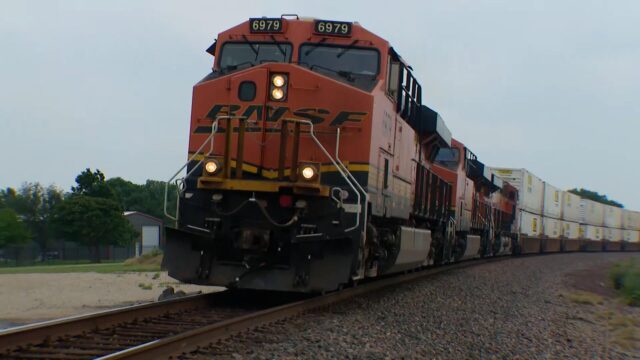Concerns Mount Over Safety and Accessibility Due to Lengthy Freight Trains in Texas
In Texas, the issue of train crossings has escalated, particularly in Tarrant and Denton Counties, raising serious concerns about safety and accessibility for local residents and businesses. Emergency services, including the Fort Worth Fire Department, are adapting their response protocols to navigate the challenges posed by frequent train blockages.
Emergency Response Alterations
When a call comes in from areas near train tracks, firefighters in Fort Worth dispatch two trucks from different directions to ensure that their response time remains efficient. One major area of concern is the Avondale-Haslet Road crossing, which has been identified as the most frequently blocked train crossing in North Texas. Fort Worth Fire Department spokesperson Craig Trojacek emphasized, “A stopped train is not going to stop our response time.”
The Federal Railroad Administration has stated that while they prioritize safety across all train lengths, they have yet to find empirical evidence linking train length to a decrease in safety. A study conducted in 2024 revealed a correlation between longer trains and increased derailment risks; however, the issue remains contentious.
The Vista Ranch Neighborhood Dilemma
Residents of the Vista Ranch neighborhood in northern Fort Worth face significant challenges due to their unique geography. Jeff Kennedy, a local resident, describes Vista Ranch as a “lollipop neighborhood,” with only one route in and out that crosses train tracks on Tinsley Lane. In May, a train malfunction resulted in a blockage for over four hours, isolating the neighborhood and forcing parents to assist their children in climbing over stalled train cars to reach their activities.
Kennedy expressed his frustration, stating, “It’s a danger, unnecessarily.” Fortunately, construction crews in Tarrant County have begun work on a new road that will provide an alternative route for residents, although its completion is expected to take four to six months.
Impact on Local Businesses
The disruptions caused by blocked train crossings extend beyond personal inconvenience; they pose serious challenges for local businesses as well. Chad Beavers, owner of Cold Springs Processing, has experienced firsthand the detrimental effects of such blockages on his operations. His grease disposal facility, located between two sets of train tracks, faces interruptions multiple times daily, which can severely impact the productivity of his business.
Beavers noted, “My main goal with our customers is we get you in and we get you out. And when that doesn’t happen, that hurts our bottom line.” Workers from nearby facilities have resorted to walking between train cars to make it to work on time, despite the risks involved. As Carson Brown, a forklift operator, remarked, “It’s dangerous, but you need a job.”
Legislative Attempts and Financial Constraints
In the recent legislative session, Texas lawmakers proposed a House bill aimed at capping train lengths at 8,500 feet. Unfortunately, the bill did not progress past committee meetings, and even if it had passed, enforcement would remain elusive as train regulation falls under federal jurisdiction with no current limits in place. Building additional roadways or bridges to alleviate the situation is an expensive proposition.
This year, Texas was awarded $80 million in federal rail safety grants, which covered only six specific projects. Additionally, the state allocated $250 million for railroad grade separation efforts, yet with over 9,000 train crossings statewide, these funds will not suffice to manage all problematic crossings effectively.
Current Blocked Train Crossing Statistics
| City | Blocked Crossings (per day) | Response Time Impact |
|---|---|---|
| Fort Worth | 3-8 | Increased delays |
| Haslet | Variable | Depends on service requests |
| Denton | N/A | Potentially affected |
The ongoing struggle with lengthy freight trains continues to raise significant safety and accessibility issues for Texans. Without effective legislative measures or infrastructure investment, these problems are likely to persist.














